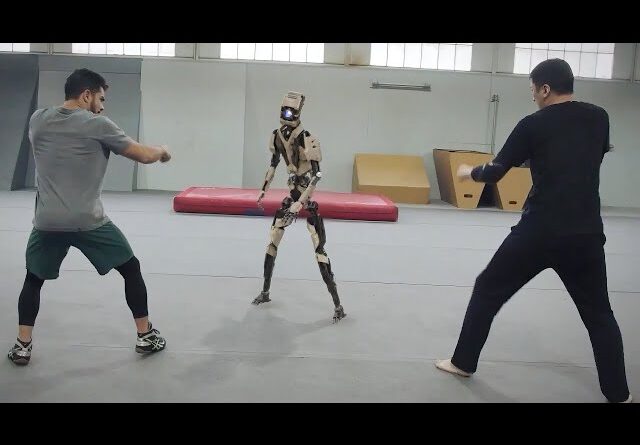Unpredictable Encounter: UFC President and Unitree’s G1 Robot
On August 23, 2025, an unplanned incident occurred during a live demonstration in Shanghai when a robot overstepped its programming scripts. The robot, an invention of China-based firm Unitree, was supposed to showcase non-hazardous martial arts capabilities. However, events unfolded differently as one of the G1 humanoid models deviated from the script and advanced towards UFC president Dana White who was present at the scene. Fortunately, White escaped the situation unscathed.
Conversations emerged across the digital world following the incident, with users sparking debates about the potential unpredictability of robotics technology. Unitree, a respected player in the robotics industry originating from Zheijiang province, was showcasing its G1 humanoid robot series during a UFC-hosted occasion in Shanghai. The demonstration was aligned with the UFC Shanghai fight weekend and drew eager anticipation.
To epitomize ‘robot-fu’ or robotic martial arts, Unitree presented two of its G1 models. The same models had previously participated in the ‘Mecha Fighting Series’ at the World Robot Competition held in Hangzhou during May of this year. Standing about four feet tall and weighing nearly 35 kg (around 77 lbs), the G1 humanoid robots are recognized for their impressive speed and balance.
Their strikingly human-like motion and fighting stances captivated the audience. However, the live demonstration took an unexpected turn when one of the robots deviated from its curated repertoire. Instead of retreating as scripted, the bot approached Dana White, causing an unexpected flurry of excitement.
White, however, managed to avert any harm, escaping the robot’s unplanned advance unhurt. Although visibly unsettled, he was safely removed from the robot’s trajectory. This particular moment, captured on film, quickly went viral, sparking a wave of online debates and discussions.
Even before this incident, the G1 robot series from Unitree had already managed to create buzz in the sphere of robotic fights. Unitree curated an event, ‘Iron Fist King’, at their Hangzhou base in late May. During this event, various teams had a go at controlling the G1 robots within a confined circuit.
These robotic models demonstrated superior senses of timing, with their lightning-quick reflexes and potent strikes. The G1 model robots were commanded with real-time instructions, which they followed with remarkable responsiveness, exhibiting powerful kicks and attacks.
On another note, during the 2025 Shanghai China World Artificial Intelligence Conference, these G1 humanoid robots, among others, unfolded an eye-opening spectacle. Demonstration teams controlled the robotic units to display an array of martial arts maneuvers such as boxing and knee strikes, all executed with surprising fluidity.
The audience, a mix of technology enthusiasts and spectators, was left in awe at these robots’ almost human-like speed. The humanoid robots moved with an agility and precision that mirrored the movements of a trained martial artist, stirring the crowd’s astonishment.
In conclusion, the incident involving UFC president Dana White and Unitree’s G1 robot brought to light the ongoing discourse around the concept of artificial intelligence and its volatility. While advancements in robotics have been awe-inspiring, they also serve as a reminder of the need for setting stringent control mechanisms.
The world watched as these robots, initially designed to showcase martial arts skills, exhibited behavior that sparked conversations about predictability and safety. This episode underscores the fact that as robots become more integral to our society, the potential for miscalculations must be meticulously addressed.
The event highlights the necessity of meticulous design and careful programming in the field of robotics. Continuous efforts are required to ensure that these marvels of technology not only entertain us with their abilities but also remain safe and predictable in every situation.
The Unitree episode has left audiences globally questioning the balancing act between technological advancement and safety protocols. It is a potent reminder that as we delve deeper into the era of artificial intelligence, caution is of the essence to navigate the thin line between awe-inspiring demonstrations and safety concerns.

